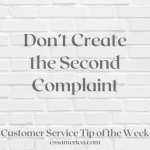The Chicago Blackhawks professional hockey team announced this week (http://blackhawks.nhl.com/club/news.htm?id=523044) that they are launching a new program to improve the fan experience. Chris Werner, the Blackhawks Senior Executive Director of Ticketing and Business Development stated “Quality customer service has been an ongoing priority over the course of the recent seasons. We are working hard at using different innovative methods to gather fan feedback to measure guest’s overall experience.”
This program focuses on getting fan feedback during the games. While that’s not novel, per se (many teams over the years have conducted in-game surveys), what it does suggest is that this organization understands that if it truly wants to impact fan satisfaction, it has to go to the fans and talk to fans. It has to make it easy for fans to get in touch with them. It has to be proactive and seek the input. It has to gain the information as real-time as possible.
These are all great principles for any organization to consider. Does your organization go to where the customers are (when they’re already interacting with your business) and ask for feedback? Does your organization make it easy for them to provide feedback? Do you try to gain information on the customer’s experience while the customer is…well experiencing?
Rethink your research strategies to go away from customer satisfaction surveys conducted over the phone when all your business is done face-to-face. Make sure your research strategies are not purely retrospective, when a customer’s memory cannot always be trusted.
Make sure that you’re asking and receiving real-time input from your customers today.
Interested in improving your company’s customer service? See more information at: http://www.cssamerica.com/





















